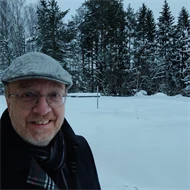Coping with the loss of the last: indicators for forest landscape biodiversity
After 200 years of forestry in Sweden remaining natural forests occur mainly as more or less isolated fragments. Besides the habitat loss of natural forests, it also implies that connectivity is lost. Hence, there are large deficiencies in the green infrastructure of forest landscapes.
Green infrastructure is a concept identified in the EU biodiversity strategy, and on a national level all Swedish counties have developed plans to integrate a landscape perspective in their work with nature conservation. This requires good and detailed knowledge on existing natural values and developed tools for spatial planning. Hence, knowledge of both the ecological system, and competence and resources for efficient management, are needed. A key component for success is relevant indicators of biodiversity at landscape level.
Access to relevant wall-to-wall geographical data for spatial planning of nature conservation at the landscape scale has significantly increased in recent time. Hence, there are good opportunities for analysis of current conditions, and for development of new spatial planning tools. In this project we have used a large number of such data and through a set of subprojects aimed to provide support for efficient governance and improved green infrastructure for forest biodiversity at both national and regional levels.
Facts
Project period
190101-220731
Subjects
Research groups
Project leader

Project members





